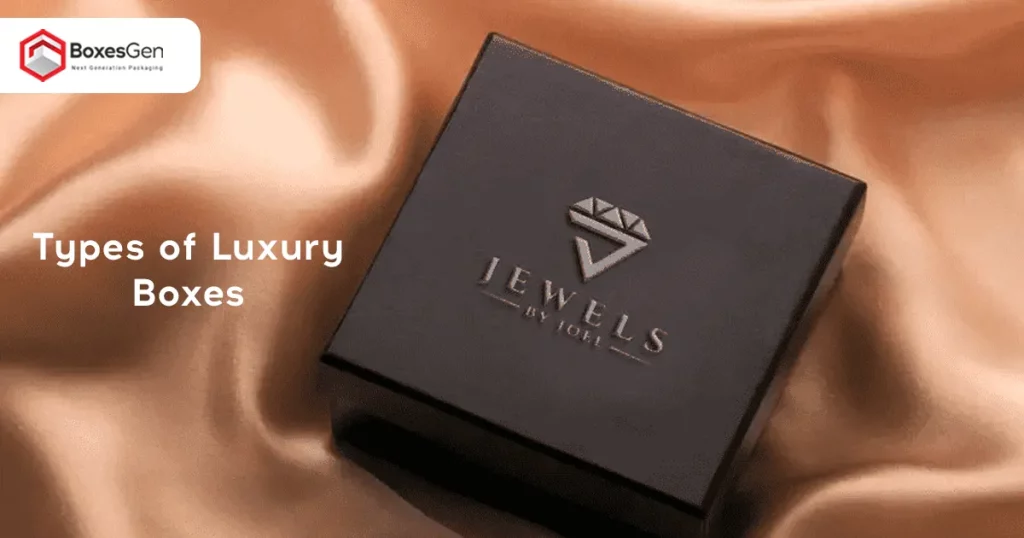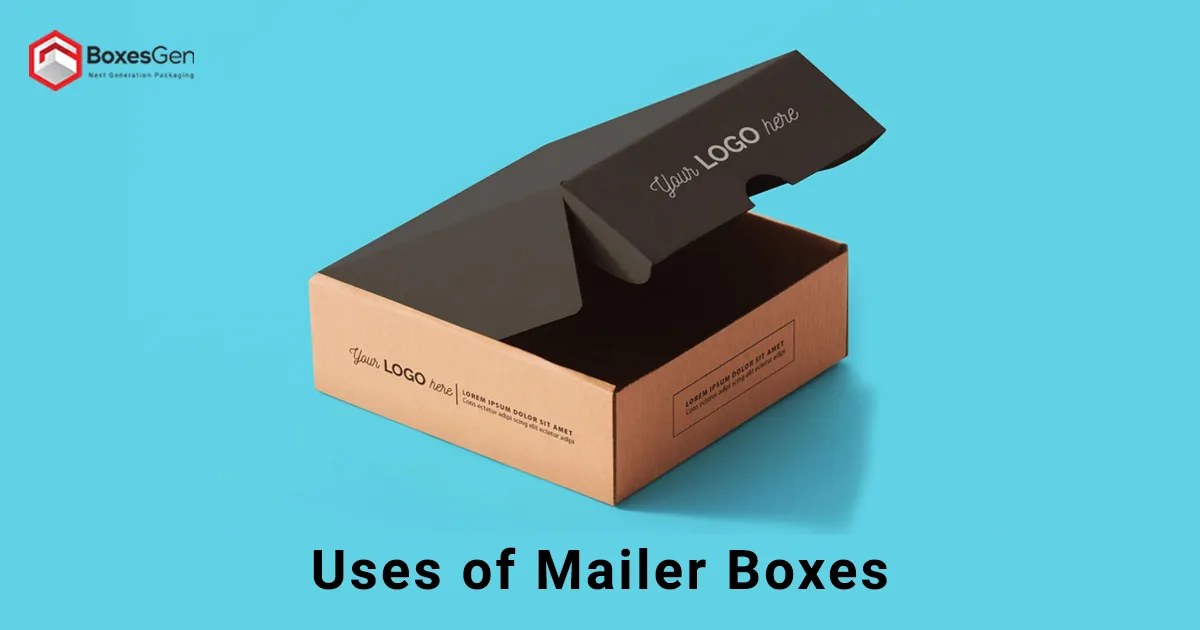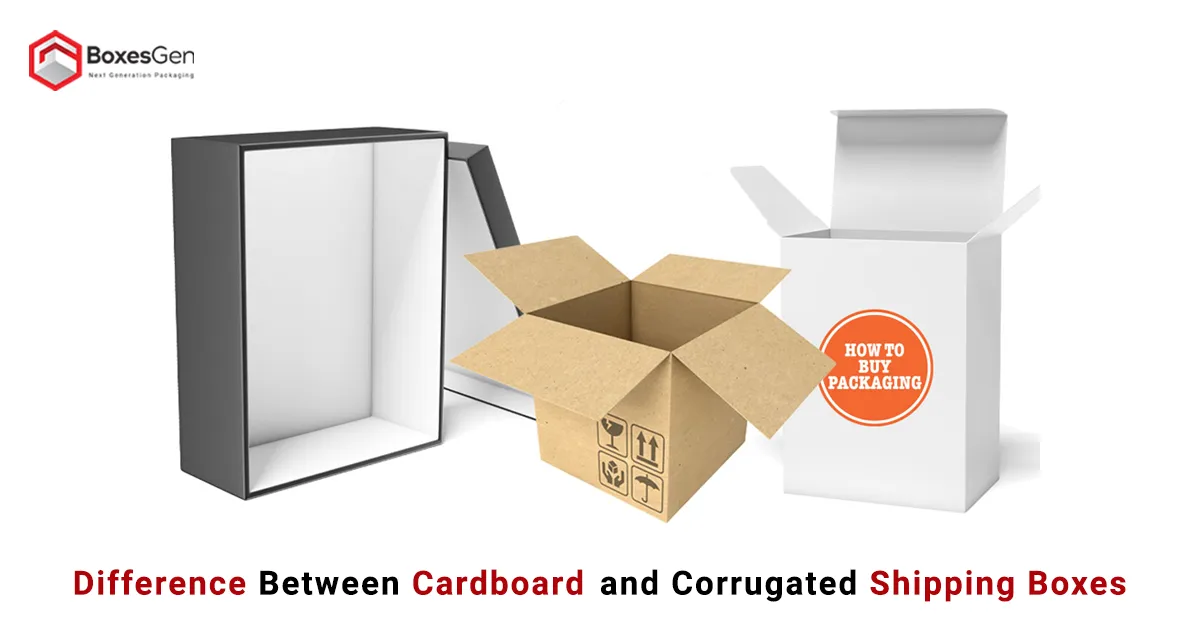Types of Luxury Boxes
In the packaging market, luxury boxes stand out as exquisite embodiments of sophistication and opulence. Each type of luxury box caters to diverse needs, offering not just a container but an experience. Let’s delve into the intricacies of some prominent types that grace the world of premium packaging.
Rigid Boxes
Rigid Boxes, also known as set-up boxes, are synonymous with durability and sturdiness. These boxes are made from robust materials like paperboard or chipboard, ensuring that the package maintains its shape and provides a luxurious feel. Their rigid structure makes them ideal for protecting delicate or high-value items during transit.
Rigid boxes come in various shapes and sizes, offering flexibility in design. The exterior can be adorned with high-quality printing, embossing, or debossing, adding a personalized touch. The use of premium materials ensures that the box itself becomes a statement piece, contributing to the overall perceived value of the enclosed product.
The construction of rigid boxes involves a meticulous process, ensuring that the box is not only visually appealing but also durable. The seamless design and the absence of visible joints create a sleek and polished look. Whether used for packaging electronics, cosmetics, or luxury gifts, rigid boxes provide a sturdy and luxurious solution.
Hinged Lid Box
Hinged lid boxes, characterized by a connected top and bottom, boast a seamless opening experience. This design adds an extra layer of sophistication, making it a popular choice for luxury gifts and premium products. The hinge allows for a smooth and controlled reveal, creating an element of anticipation for the recipient.
These boxes are often used for packaging high-end watches, jewelry, or delicate items where the unboxing experience is crucial. The connected lid also offers ample space for branding, allowing companies to showcase their logos, taglines, or other design elements prominently. The hinged lid design combines functionality with aesthetics, making it a timeless choice for luxury packaging.
Candy Boxes
Candy Boxes go beyond mere containers; they are an art form that raises the experience of gifting and receiving confectionery. These boxes are designed to exude luxury, often featuring intricate detailing, vibrant colors, and embossed patterns. The goal is not just to store sweets but to improve the overall aesthetic appeal of the delicacies they contain.
The construction of candy boxes is often elaborate, with attention to detail that mirrors the craftsmanship of the treats within. Embellishments such as ribbons, bows, or gold foil accents contribute to the luxurious presentation. Candy boxes are not only a vessel for sweets but a reflection of the thought and care put into the entire gifting experience.
Drawer Box Style
Drawer box style, characterized by its sliding mechanism, combines functionality with aesthetic appeal. These boxes are versatile and commonly used for premium cosmetics, jewelry, or small luxury items. The sliding drawer adds an interactive element, turning the unboxing experience into a memorable event.
The drawer design provides easy access to the contents, making it a practical choice for products that require frequent use. This style allows for creative packaging solutions, such as compartments or trays within the drawer, catering to the specific needs of the product. Drawer boxes not only showcase the product but also offer a glimpse of luxury with every slide.
Book Style Box
Book Style Boxes draw inspiration from the world of literature, resembling elegant hardcover books. These boxes are ideal for packaging items like notebooks, high-end stationery, or any product where a touch of literary charm is desired. The magnetic closure augments the book-like appearance, adding a layer of sophistication.
The book style design allows for ample space for artwork, illustrations, or informative content, transforming the packaging into a storytelling medium. The magnetic closure, often embellished with gold foil accents, adds a tactile element to the unboxing experience. Book style boxes not only protect the enclosed product but also serve as a symbol of refined taste and appreciation for craftsmanship.
Collapsible Rigid Box
Collapsible Rigid Boxes are designed with convenience in mind. These boxes can be assembled and disassembled easily, allowing for efficient storage and transportation. Despite their collapsible nature, they maintain a luxurious feel, making them a practical choice for brands that prioritize both elegance and practicality.
The collapsible design not only saves space during storage but also adds a layer of exclusivity to the unboxing experience. Collapsible rigid boxes are often used for premium clothing, accessories, or gift sets where a balance between practicality and luxury is essential. The versatility of these boxes makes them a favorite among brands seeking a sophisticated yet functional packaging solution.
Custom Boxes
Custom Luxury Boxes offer tluxury boxeshe freedom to tailor packaging according to specific requirements. From size and shape to materials and finishes, brands can create a Custom Packaging Solution that aligns perfectly with their vision and brand identity. This customization adds an exclusive touch, making each box a true representation of the brand’s essence.
The process of designing custom luxury boxes involves collaboration between the brand and packaging experts. It allows for the incorporation of unique features such as die-cut windows, embossed logos, or specialized printing techniques. Custom boxes become a canvas for creativity, enabling brands to stand out in a crowded market and leave a lasting impression on consumers.
Gold Foil Boxes
Gold foil boxes exude opulence with their metallic finish. The use of gold foil not only improves the visual appeal but also adds a touch of luxury associated with precious metals. These boxes are often chosen for high-end products, special editions, or limited-edition releases, creating a sense of exclusivity.
The application of gold foil can range from subtle accents to full coverage, depending on the desired level of sophistication. Gold foil boxes are particularly popular in the beauty and fashion industries, where the packaging plays a crucial role in conveying a sense of glamour and prestige. The reflective quality of gold foil adds a dynamic element, catching the eye and creating a memorable impression.
Luxury Book Boxes
Luxury book boxes take inspiration from classic literature, combining the charm of books with the functionality of packaging. These boxes often feature intricate details, embossed patterns, and high-quality materials, creating an aura of timeless elegance. The magnetic closure adds to the overall luxurious experience, making it a popular choice for premium gifts.
The craftsmanship of luxury book boxes mirrors the artistry found in antique bookbinding. The use of premium materials such as leather, velvet, or textured paper increases the tactile experience. These boxes are not only containers but artifacts that evoke a sense of nostalgia and appreciation for the finer things in life. Luxury book boxes become keepsakes, cherished long after the original product is enjoyed.
Magnetic Closure Rigid Boxes
Magnetic Closure Rigid Boxes, as the name suggests, feature a magnetic mechanism for secure closure. This design not only adds a layer of security but also contributes to the overall aesthetic appeal. The satisfying “click” of the magnetic closure improves the unboxing experience, creating a moment of anticipation and delight for the consumer.
The magnetic closure is often paired with other luxurious elements such as embossing, debossing, or spot UV finishes. This combination raises the box from a functional container to a piece of art. Magnetic closure boxes are prevalent in industries where the presentation is as crucial as the product itself, such as high-end electronics, premium spirits, or luxury accessories.
Shoulder Boxes
Shoulder boxes, also known as shoulder-style boxes, serve a dual purpose of functionality and aesthetics. These boxes feature a unique design with extended side panels that resemble shoulders, creating an elegant and distinctive look. The functionality of shoulder boxes lies in their ability to provide a secure and protective enclosure for a variety of products, particularly those that benefit from a premium presentation. The extended shoulders not only add structural strength but also offer ample space for branding, product information, or eye-catching visuals. These boxes are commonly used in the luxury goods industry for items like perfumes, cosmetics, and high-end gifts, where the combination of functionality and visual appeal enhances the overall packaging experience.
Conclusion
The world of luxury boxes is a diverse and fascinating one, offering a myriad of options to cater to different preferences and requirements. From the structural integrity of rigid boxes to the literary charm of book style boxes, each type brings its own unique flair to the art of packaging, ensuring that the experience of receiving a luxury item is as memorable as the product itself. As brands continue to innovate and push the boundaries of packaging design, the allure of luxury boxes remains timeless, capturing the essence of refined taste and the appreciation for life’s finer moments.
FAQs Type of luxury Boxes
What Makes a Packaging Luxury?
Luxury packaging is defined by premium materials, intricate design, and attention to detail. It reflects the brand’s exclusivity and increases the perceived value of the product within. The use of high-quality finishes, unique textures, and custom elements contributes to an opulent and sophisticated appeal, creating a memorable unboxing experience.
How Do You Make Luxurious Packaging?
To create luxurious packaging, focus on premium materials like high-grade paper, metals, or sustainable alternatives. Incorporate intricate design elements, embossing, foiling, and unique structural features. Prioritize craftsmanship and ensure the packaging aligns seamlessly with the brand’s identity, delivering a sense of exclusivity.
What Are Luxury Boxes Made of?
Luxury boxes are crafted from top-tier materials such as rigid cardboard, velvet, leather, or metal. These materials offer durability, a premium feel, and the ability to accommodate intricate design elements. The choice of material contributes significantly to the perceived value of the packaging and the product it houses.
What Makes Packaging Premium?
Premium packaging is distinguished by high-quality materials, superior craftsmanship, and attention to detail. It communicates a sense of value and exclusivity, elevating the consumer’s perception of the product. Incorporating unique design elements, finishes, and personalized touches further improves the premium appeal of the packaging.
What Is the Trend in Luxury Packaging?
Current trends in luxury packaging include sustainable materials, minimalist designs, and innovative structures. Brands are focusing on eco-friendly options, incorporating digital elements like QR codes, and embracing a subtle, sophisticated aesthetic. Personalization and limited-edition releases also contribute to the evolving landscape of luxury packaging.
How Big Is the Luxury Packaging Market?
The luxury packaging market is substantial, with a global value in the billions of dollars. It continues to grow as consumer preferences shift towards premium experiences. The demand for unique, aesthetically pleasing packaging has expanded across various industries, driving innovation and creating opportunities for packaging manufacturers and designers.
What Is an Example of Luxury Packaging?
A prime example of luxury packaging is the iconic Tiffany & Co. blue box. Crafted from high-quality materials and adorned with the brand’s signature color, the packaging is instantly recognizable and synonymous with elegance. Its simplicity, combined with the renowned brand association, exemplifies the essence of luxury packaging.
Does Packaging Determine Product Quality?
While packaging can influence perceived quality, it does not solely determine the actual product quality. However, well-designed and premium packaging can positively impact the consumer’s perception, creating a sense of value. Brands must ensure that the packaging aligns with the promised quality of the product to maintain trust and credibility.
Which Material Is Used for Packaging?
Packaging materials vary widely and include cardboard, plastic, glass, metal, and more. The choice depends on factors such as product type, durability requirements, and environmental considerations. Sustainable materials like recycled paper and bioplastics are gaining popularity as brands increasingly prioritize eco-friendly packaging solutions.
Why Is Packaging Important for Luxury Brands?
Packaging is crucial for luxury brands as it serves as a tangible representation of the brand’s identity and values. It creates a lasting impression on consumers, contributing to brand recognition and loyalty. Premium packaging increases the overall customer experience, reinforcing the brand’s exclusivity and justifying the higher price points associated with luxury goods.
How to Make Luxury Brand Design?
Creating a luxury brand design involves a meticulous process. Focus on a distinctive brand identity, incorporating premium materials, elegant typography, and a refined color palette. Ensure consistency across all brand elements, from logos to packaging. Collaborate with skilled designers who understand the brand’s essence, delivering a cohesive and visually appealing design that resonates with the target audience.
What Is the History of Luxury Packaging?
Luxury packaging has evolved over centuries, initially centered on ornate, handcrafted boxes for royal and aristocratic clientele. With the Industrial Revolution, mass production introduced new possibilities. The 20th century witnessed the rise of iconic luxury packaging, such as the Chanel No. 5 perfume bottle. Today, the industry continues to innovate, combining tradition with modern aesthetics to create memorable packaging experiences.
How Do You Make Beautiful Packaging?
To create beautiful packaging, prioritize a harmonious design that aligns with the brand’s identity. Incorporate visually appealing graphics, high-quality images, and a well-balanced color scheme. Choose premium materials, consider unique structural elements, and ensure the packaging augments the overall product presentation. Attention to detail, simplicity, and a focus on aesthetics contribute to the creation of truly beautiful packaging.
Why Is a Box So Expensive?
The cost of a box can be influenced by factors such as materials, design complexity, and customization. Luxury materials, intricate finishes like embossing or foiling, and unique structural elements contribute to higher production costs. Customization, limited editions, and craftsmanship also play a role. Ultimately, the expense reflects the commitment to creating a premium product presentation that aligns with the brand’s exclusivity.
What Are Branded Boxes?
Branded boxes bear a company’s logo, colors, and other distinctive elements, serving as a visual extension of the brand. These boxes contribute to brand recognition, reinforce brand identity, and create a cohesive brand experience. Branded boxes go beyond mere packaging; they are a marketing tool that communicates the brand’s values and fosters a connection with consumers.
What Is the Best Packaging for A Box?
The best packaging for a box depends on the product, brand identity, and sustainability goals. Rigid cardboard is versatile and commonly used, offering durability and a premium feel. Sustainable options like recycled materials are increasingly popular. Consideration of the unboxing experience, visual appeal, and eco-friendliness guides the choice of packaging that aligns with the brand’s objectives.
How Do You Make Unique Packaging?
To create unique packaging, focus on innovation in design, materials, or functionality. Incorporate unconventional shapes, personalized touches, or interactive elements. Experiment with sustainable materials or embrace bold color choices. Collaborate with designers who can bring fresh perspectives to the brand. The key is to differentiate the packaging in a way that aligns with the brand’s identity, captures attention, and creates a memorable experience for the consumer.
What Is Attractive Packaging?
Attractive packaging captivates consumers through visual appeal and a compelling design. It combines aesthetics, functionality, and a reflection of the brand identity. High-quality materials, vibrant colors, and thoughtful graphics contribute to attractiveness. An effective interplay of these elements creates packaging that not only protects the product but also entices consumers, making the overall experience more enjoyable and memorable.
Which Brand Has the Best Packaging?
Determining the “best” packaging is subjective, but brands like Apple are often praised for their sleek, minimalist packaging. Luxury fashion houses such as Chanel and Hermès are also renowned for their elegant and iconic packaging designs. Ultimately, the best packaging aligns seamlessly with the brand’s identity, creates a memorable unboxing experience, and improves the overall perception of the product.
Which Software Is Used for Packaging Design?
Several software tools are used for packaging design, including Adobe Illustrator, Photoshop, and InDesign. These industry-standard graphic design programs enable designers to create detailed, visually appealing packaging layouts. 3D modeling software like Rhino or SolidWorks is employed for structural design. Using a combination of these tools allows designers to bring both visual and structural elements together in the packaging design process.
What Is Personalized Packaging?
Personalized packaging involves tailoring the design or content of packaging to individual consumers or specific groups. This customization can include adding names, unique messages, or even adjusting colors and graphics based on customer preferences. Personalized packaging augments the customer experience, fosters a sense of connection with the brand, and contributes to a more memorable and meaningful unboxing experience.








